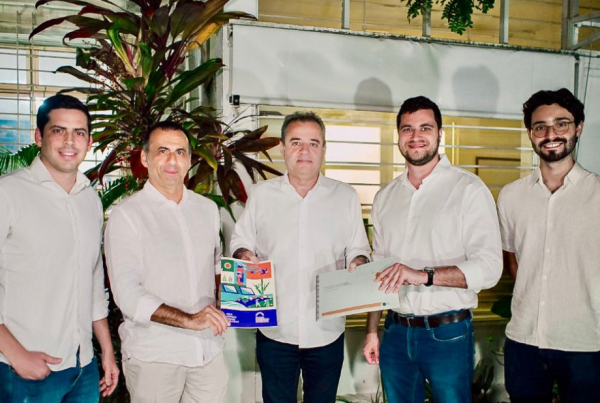After the euphoria and good wishes of New Year’s Eve, the first months of 2020 came as a trailer of what awaits us in the coming years. The fires in Australia shocked the international community in January: more than 11.7 million hectares of land have been burned, killing 33 people and about 1 billion animals since they started. Unlike the Amazon, located in the wettest area of the planet, Australia is in an area where long periods of drought are normal. At this time, bushfires are expected as a result of the heat and drought, an important phenomenon for the renewal of biomass in Australian vegetation. Once the dry period is over, rains usually end the burning process naturally and life goes on with its cycle.
This year, however, the drought and intense heat have lasted longer than normal, resulting in an atypical burning season that has left behind unprecedented devastation: an area almost the size of England has been destroyed by fire, with flames reaching 12 meters high, 6 times higher than the flames of the Amazon fires last year. Although the fires in Australia were not directly caused by humans, as was the case with the fires in the Amazon, the magnitude of the impact is a consequence of a phenomenon caused by human activity: climate change.
If climate change intensifies already existing natural processes, like the fires in Australia, in February Brazil saw the other side of this coin. In the case of the storms that hit São Paulo and Belo Horizonte recently, a combination of factors reinforced the impact of these phenomena, which will be increasingly common and more extreme. Besides the impact of global climate change, human intervention in Brazilian metropolises, through the intensive use of concrete and verticalization of buildings, results in the formation of heat islands. The heat absorbed by the concrete is carried into the air and stays close to the surface, since verticalization impairs air circulation and heat dissipation. Because of this, humid winds that used to blow over the cities now precipitate – sometimes violently – over these urban areas due to the concentration of heat.
Not only are storms like those of the last few days becoming more common and intense, but their effects tend to become increasingly devastating. The historic canalization of watercourses, both surface and underground, as well as soil sealing and the occupation of watershed areas, are among the critical factors that make large urban agglomerations like São Paulo and Belo Horizonte so vulnerable to these events.
Another aggravating factor is the fact that storms impact in different ways the rich and poor populations in these cities, as was exemplified brilliantly and poetically by the movie Parasite, this year’s big Oscar winner. Although prime neighborhoods have also been severely affected, causing millions in damages, it is the peripheral areas and populations that have suffered the most. While for the wealthier classes torrential rains are a setback, the periphery suffers with loss of life and uninsured property. When it comes to the occupation of the spring areas, the issue is even more delicate, because, besides being flood vulnerable areas, their occupation impairs the penetration of rainwater, further increasing the potential for flooding.
Events like these are expected to be more common and more intense because of the climate crisis. What can we do in this scenario? The first step is to stop denying the problem, as the presidents of Australia and Brazil still do, and implement mitigation measures in order to prevent these events from becoming even more common. At the same time, adaptation plans must be drawn up to make cities more resilient and, consequently, the damage from these phenomena smaller.
Heat island mitigation must combine a change in land use and adaptation of buildings. The implementation of vertical gardens and green roofs, for example, are simple solutions that can minimize urban impacts. Verticalization, however, is a more complex problem that cannot be mitigated so easily. We can, however, include limitations on the construction of very tall buildings in urban zoning policies and master plans as a measure to slow down the intensification of the problem. The occupation of the spring areas is also complex, largely irregular, and a reflection of real estate speculation. The mitigation of this problem includes enforcement to prevent new irregular occupations, but also the elaboration of effective policies for access to housing.
Soil sealing, on the other hand, can be mitigated by replacing asphalt on certain roads with the old cobblestone or interlocked pavement. In other words, alternatives that often already exist and are cheap, that allow the water to penetrate the soil, supplying the water tables and avoiding the disorganized runoff, responsible for floods and diseases. Finally, a neglected component of climate change adaptation is the vocational training of youth in order to prepare them with the necessary skills in the transition to more sustainable and resilient societies. Thus, our goal through Youth Climate Leaders is to train young people and connect them with professional opportunities in the field, addressing two of the main challenges highlighted by the World Economic Forum for the 20s: the climate crisis and unemployment.
Like the series Game of Thrones, the movie Parasite, and other blockbusters, the climate crisis is a narrative based on extreme, opposite, and extraordinary events. A lot of water will flow, and phenomena like the forest fires in Australia may also occur on Brazilian territory, even though it is difficult to conceive of these scenarios for the time being.
We are still recovering from the rain damage. Although fires of this type are more likely to occur in the Cerrado, a biome with similar characteristics and climatic dynamics to Australia, criminal fires in the Amazon intensify the risks by reducing the amount of moisture transported to other regions of the country. In the climate game, cause and consequence blend together and bluffing is no longer an option.
*Cassia Moraes has a Master’s degree in Public Administration and Development from Columbia University, is CEO of Youth Climate Leaders (YCL) and Networking and Outreach Coordinator at the Centro Brasil no Clima.
*André de Castro dos Santos is a researcher, PhD candidate in Climate Change and Sustainable Development Policies at the University of Lisbon and in Environmental Law at the University of São Paulo.
Source: Uol




